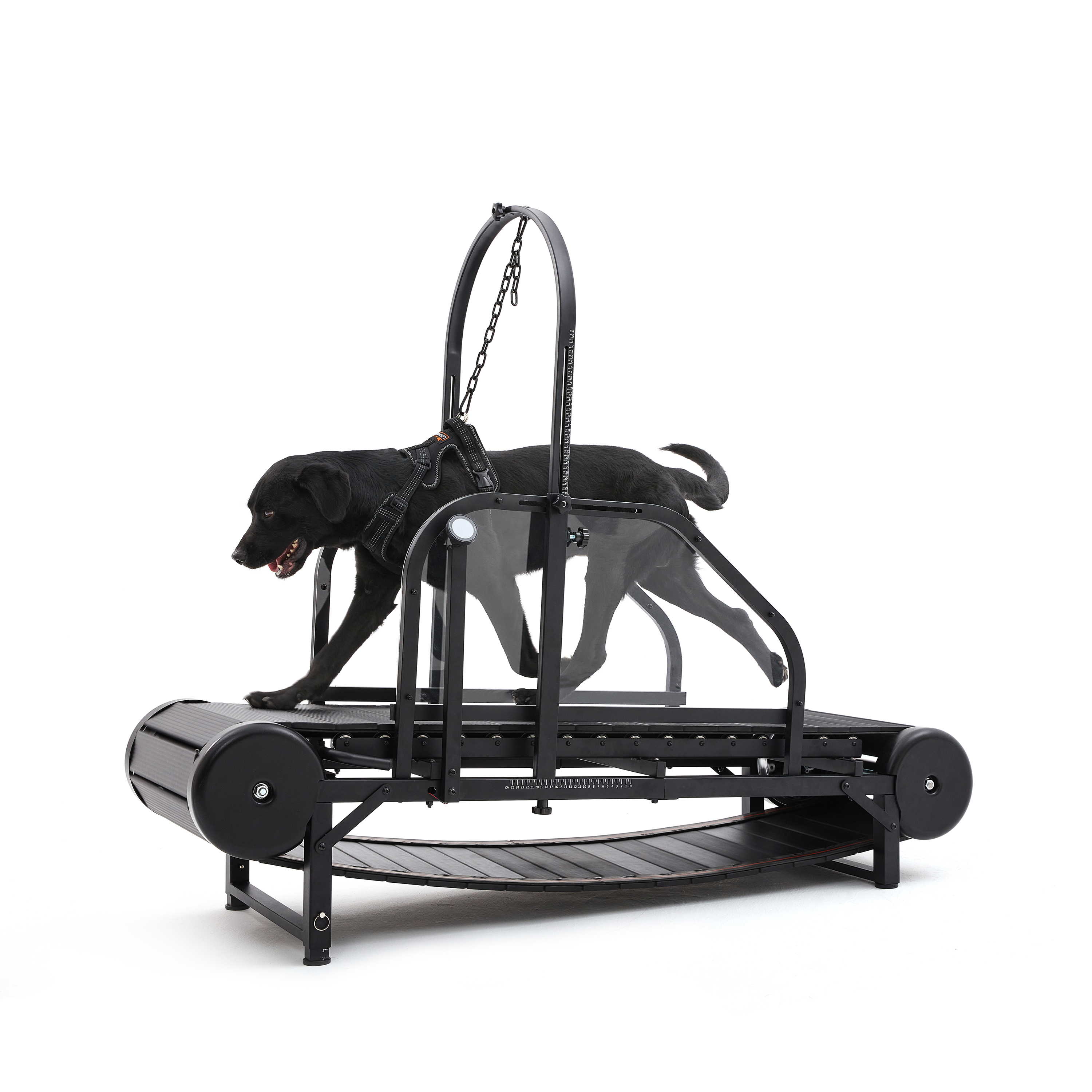Labradors, with their friendly faces, wagging tails, and eagerness to please, have earned their place as one of the most popular dog breeds worldwide. Renowned for their intelligence, adaptability, and gentle nature, they excel in various roles, from beloved family pets to highly trained service dogs. However, to bring out the best in these wonderful dogs, proper training is essential. A frequently asked question among Labrador owners and enthusiasts is, “What is the best age to train a Labrador?” Additionally, integrating a dog slat treadmill into their training routine can offer unique advantages. In this comprehensive blog, we'll explore the optimal training ages for Labradors and how a dog slat treadmill can enhance the training process at different life stages.
Understanding the Growth Stages of Labradors

Before delving into the best age for training, it's crucial to understand the different growth stages of Labradors. Each stage comes with its own set of physical, mental, and behavioral characteristics that influence their ability to learn and respond to training.
Puppy Stage (0 - 6 months)
In the puppy stage, from birth to six months, your Labrador grows quickly. This time is very important for socializing and basic training. Studies show Labradors have big growth spurts at 12 to 14 weeks. By 18 to 19 weeks, they weigh about half of what they will as adults. Most Labradors reach their full height by nine months, but they keep filling out until they are two years old.
Starting training early is very important. Puppies learn quickly and soak up everything. Training sessions during this time help build good habits. You can teach basic commands and house training, which sets a strong base for their future behavior.
Adolescent Stage (6 - 18 months)
When your Labrador becomes a teenager, they start to be more independent and may test limits. This time can be tough, but it’s also a chance for advanced training. From six to 18 months, your dog has a lot of energy and needs lots of exercise. A dog slat treadmill is a great way to use that energy. It gives a safe place for exercise while helping with training commands.
During this stage, focus on improving behaviors and teaching more complex commands. Research shows that focused training sessions can help learning. For example, a study with Labradors found that short, intense training led to better learning than spreading it out. This means that the more focused and early your training is, the better your dog will learn.
Adult Stage (18 months and older)
When your Labrador turns 18 months, they become an adult. At this point, they have mostly finished growing, but some may still gain weight until they are four years old. Training doesn’t end here; it changes. Ongoing training and maintenance are key to keeping your dog well-behaved and active.
Regular exercise is still very important. Activities like treadmill workouts help keep them healthy in body and mind. Adult Labradors do best with routine and structure, so keep practicing the commands and behaviors you’ve taught them.
The Best Age to Start Training a Labrador

Early Socialization and Basic Training (8 - 12 weeks)
It is very important to start training your Labrador early. At 8 to 12 weeks, your puppy learns quickly. This is the best time for socializing and teaching basic commands. You can let them meet different people, pets, and places. Use rewards to encourage good behavior. You can teach simple commands like "sit" and "stay" now. This will help with house training and prepare them for future learning.
Intermediate Training (3 - 6 months)
Between 3 - 6 months of age, Labradors are ready for more intermediate training. Their physical capabilities have improved, and they can focus for slightly longer periods. This is the time to expand on the basic commands, teaching more complex ones like “down,” “heel,” and “leave it.” Training sessions can be extended to 10 - 15 minutes, but it's still important to keep them interesting and varied.
During this stage, a dog slat treadmill can be gradually introduced. Dog slat treadmills, with their unique slat - based design, offer a more natural running surface compared to traditional belt treadmills. The slats move independently, mimicking the feel of running on grass or uneven ground. Starting with short, low - speed sessions on the slat treadmill helps puppies get used to the new exercise equipment. It also provides a controlled environment for physical exercise, which is beneficial for their developing muscles and joints.
Advanced Training and Behavior Refinement (6 months - 18 months)
The adolescent stage, from 6 months to 18 months, is a challenging yet rewarding time for Labrador training. While they may be more headstrong during this period, they also have the capacity to learn advanced commands and perform more complex tasks. This is an excellent time to train them for specific roles, such as service work or competitive obedience.
A dog slat treadmill becomes even more valuable during this stage. As Labradors' energy levels soar, the slat treadmill provides an effective outlet for their excess energy. Regular sessions on the slat treadmill not only help maintain their physical fitness but also contribute to mental stimulation. The variable surface of the slat treadmill engages different muscle groups and challenges their balance, enhancing their overall physical coordination. Owners can incorporate commands during treadmill sessions, such as changing speed on command or stopping at a specific point, further reinforcing obedience and focus.
Lifelong Training and Maintenance (18 months and older)
Even after Labradors reach adulthood, training should continue as a lifelong process. At this stage, the focus is on maintaining good behavior, refining skills, and introducing new challenges to keep them mentally and physically active. A dog slat treadmill remains a useful tool for adult Labradors. It allows for consistent exercise, especially during inclement weather or when outdoor activities are limited.
For adult Labradors, the slat treadmill can be used for more intense workouts. Owners can increase the speed and duration of the sessions, and even incorporate interval training to boost cardiovascular health and endurance. Additionally, the treadmill can be used as part of a weight management plan, helping to prevent obesity, which is a common issue in adult Labradors.
The Unique Benefits of a Dog Slat Treadmill in Labrador Training

Using a dog running machine can really improve your Labrador's training. Here are some special benefits of adding this tool to your routine.
Natural Gait Preservation
A dog slat treadmill helps keep your dog's natural movement. Unlike regular treadmills, it lets your Labrador run naturally. This way, your dog can exercise safely without getting hurt. You’ll see that your Labrador runs comfortably, which is important for their health.
Enhanced Physical Conditioning
Labradors need regular exercise, and a dog slat treadmill is a great way to help. You can slowly increase how long and hard your dog works out. Start with short sessions and gradually make them longer as your Labrador gets used to the treadmill. This helps build their stamina and muscle, making them healthier and more energetic. Plus, it’s a fun way to use up extra energy!
Mental Stimulation
Training is not just about physical activity; it also needs mental work. A dog slat treadmill can do both! While your Labrador runs, you can add commands and tricks to keep their mind busy. This mix of physical and mental activity can help create a well-behaved dog. You’ll notice your Labrador becomes more focused and responsive during training, making it more fun for both of you.
Weather - Independent Exercise
Bad weather can stop regular exercise. Rain, snow, or heat can make it hard to take your Labrador outside. But with a dog slat treadmill, your dog can still get the exercise they need, no matter the weather. This means you can keep to your training schedule without breaks. You’ll love being able to train indoors, keeping your Labrador active and happy all year long.
Adding a dog slat treadmill to your Labrador's training has many benefits. From keeping their natural movement to ensuring exercise no matter the weather, this tool can make your training better and help your dog thrive.
Tips for Using a Dog Slat Treadmill in Labrador Training

Introduction and Acclimation
When you first show your Labrador the dog slat treadmill, go slowly. Let your dog check out the treadmill while it’s off. Allow them to sniff it and get used to it. Once they seem calm, turn it on at a low speed. Use treats or their favorite toy to encourage them to walk on it. This slow way helps your dog feel safe and confident. Remember, every dog is unique. Some may get used to it fast, while others might need more time.
Monitoring and Safety
Safety is very important during dog training. Watch your Labrador while they are on the treadmill. Make sure they are not working too hard. If your dog looks tired, like panting heavily or slowing down, stop the session. It’s also good to check the treadmill for any dangers. Make sure there are no loose parts or trash that could hurt them. Using a harness can help keep your dog safe and stop them from jumping off suddenly.
Combining with Other Activities
While the dog slat treadmill is a great tool, remember to mix in other activities. Combine treadmill time with outdoor walks or playtime. This mix keeps your Labrador interested and helps them grow. You can also add potty training to your routine. For example, take your dog outside for a potty break before and after treadmill time. This way, you build good habits while keeping your dog active and happy.
In summary, the best age to start training your Labrador is between 6 months and 2 years. Early socialization and consistent practice lay a strong foundation for good behavior. Remember, training isn’t just about commands; it’s also about building a bond with your dog. So, don’t wait! Start training at the right time to help your Labrador grow into a well-behaved companion. You’ll both enjoy the journey together!










0 Comments